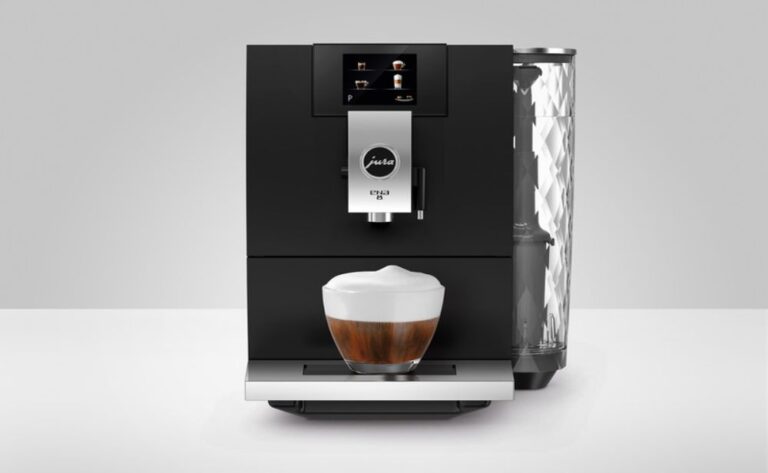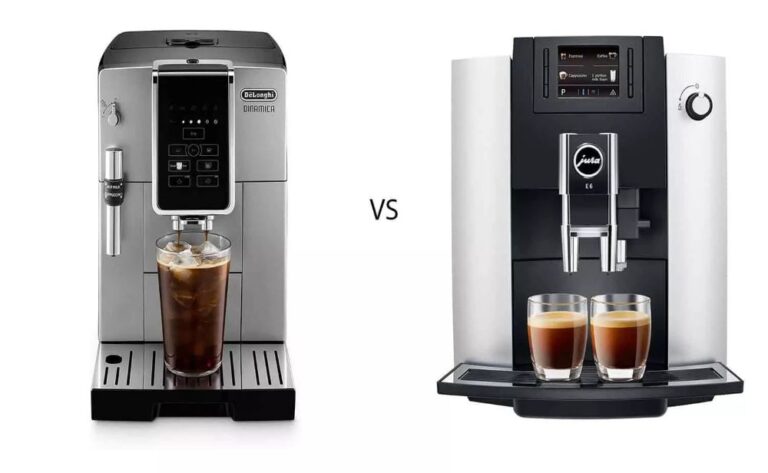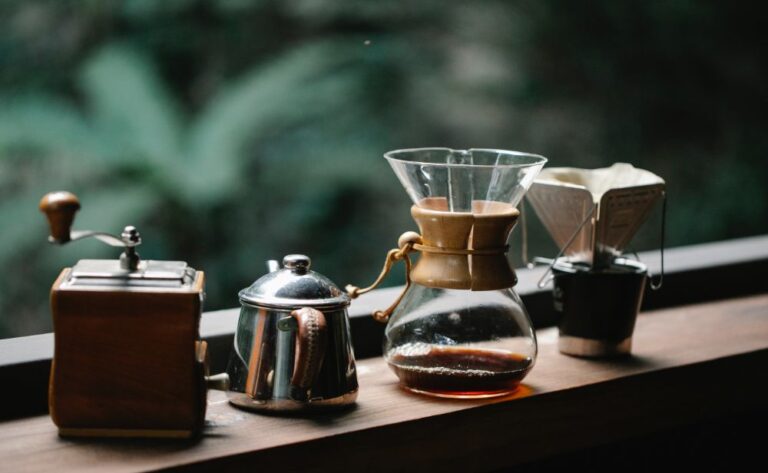
If you go into a coffee shop and find a La Marzocco Strada on the bar, you will immediately know that this establishment places a high value on espresso. The best cafés all around the world have one of these renowned espresso machines in their establishments.
But do you know if it’s the best option for your company? And which model is most appropriate for the workflow you have? The purpose of this review is to provide responses to those questions and others.
Summary: The La Marzocco Strada
• Each group possesses its own separate coffee and steam boiler, both of which are equipped with PID temperature control.
• Steaming wand equipped with a proportional steam valve for foaming milk of varying volumes
• Three distinct versions, each offering a varied level of automation in comparison to barista control
It is a machine that really helps the barista get back in touch with the espresso, and it makes you feel like you are so much more engaged in the process as a whole.
The La Marzocco Strada Review
There is a reason why customers pay a premium for the La Marzocco brand, and it isn’t simply because of the company’s aesthetic or name recognition: the very best La Marzocco espresso machines are constructed to last! The Strada is not exceptional in any way. There are three distinct iterations of this model: a semi-automatic (EE), a mechanical paddle (MP), and an automatic volumetric (AV). While all have an equally spectacular appearance and high quality, they differ in how they are operated and how easy it is to use them.
Let’s go into the nitty-gritty of the situation to determine which version of the car is ideal for you.
Capacity for Breathing
In every model in the La Marzocco Strada series, there is a set of insulated twin boilers made of stainless steel that is dedicated to each group. Depending on how much espresso you need to make, you have the option of purchasing either a two- or three-group model.
The steam boiler and the coffee boiler are both under the control of PID, but independently. When compared with normal E61 groups, the exceptional temperature stability offered by the Strada is a direct result of this, as well as the presence of a pre-heating system and saturated group heads (1).
User Friendliness
The ease of use is the area in which we find the MOST significant differences between the three versions. To determine which option is best for you, you will need to consider the pros and cons of increased automation against barista control.
The Semi Automatic (EE) model is the most straightforward and cost-effective of the three options. The paddle that is located on the grouphead is not a manual control but rather a straightforward on/off switch. The La Marzocco Linea Mini has this very same technique in its coffee machine. On the other hand, the Linea Mini does not have programmable pre-infusion capabilities, but the EE does.
The first version was called the Mechanical Paddle (MP) model. It provides the greatest amount of manual control but also calls for the greatest amount of barista ability. In this instance, the mechanical paddle operates a valve that controls the amount of water that travels through the group. You are able to carry out pressure profiling on numerous groups concurrently as a result of the fact that the conical valve, rather than the pump itself, controls the rate at which the water is pumped.
Over the course of the past few years, this particular method of pressure profiling has gained popularity and opened up new avenues through which to investigate specialty coffee beans.
The Auto Volumetric (AV) model is the most expensive option, but it is also the most straightforward to operate. Instead of manually regulating the shot, each group head has buttons that can be pre-programmed with a unique extraction formula. This eliminates the need for human control. In addition to having the capability to hold four distinct programs, each group also has a continuous flow option. Because it enables the smoothest and most effective flow of work, the AV is frequently used in high-volume cafes.
A recently introduced form of the Strada called the EP (Electronic Paddle) also enables pressure profiling and claims to be even MORE user-friendly for baristas. Regardless, we won’t get to that review until another time.
Programming can be done on every model by using the digital display that is located on the front of the machine. During operation, the display also performs the function of a shot timer.
Milk Frothing
The Strada comes with two fully-articulated, no-burn steam wands, each of which is fitted with proportional steam valves, a feature that is quite convenient. A lever located on the front of the machine is used by the user to operate the steam wand; however, this lever does not directly control the steam. Instead, it operates the electronic components that control the opening and closing of the valve.
Additionally, it extends the lifespan of the valves, but when the time comes to replace them, they will be a little more costly to do so.
The hot water wand is likewise good, and it comes equipped with a mixing valve that makes it simple to regulate the temperature of the water. My one and only criticism of the machine is that the button for the hot water dispenser is located in an odd spot. However, this is a minor issue that is only noticeable because the rest of the equipment is so user-friendly for baristas.
quality of the build
When La Marzocco decided to construct the most technologically advanced espresso machine currently available on the market, they enlisted the assistance of hundreds of coffee industry experts from different countries. They invested two years in gathering information and opinions (3). They were known as the Street Team, and the product that was developed as a direct result of their comments was called the Strada, which is an Italian word that literally means “street.”
As is always the case, it is extremely difficult to find fault with the build quality of this brand’s products. They use high-end industrial elements for the interior and body, while accessories like portafilters and baskets are made of stainless steel.
The brand is known for both its quality and its well-designed, useful products. Because of the Strada’s more open design and improved visibility, baristas have expressed a preference for the machine’s exposed groups and height-adjustable drip tray.
Cleaning and Maintenance
The cleanliness standards for the Strada are held to a slightly higher degree than those for normal residential models. And considering how much espresso a machine used in a cafe produces on a daily basis, preventative maintenance is of an even greater significance.
The technique for cleaning and maintaining the machine that is explained in the handbook is comprehensive; nonetheless, it is not significantly more involved than the procedure for any other commercial espresso machine.
A blind filter is included, in addition to the day-to-day cleaning of the machine and the routine flushing of the backflush. Despite this, we advise cleaning the groups and drain wells, filters and filter holders, the drain collector, as well as the body of the hot water and steam nozzles on a weekly basis. In addition to that, you need also clean the screen of the diffuser.
Any more sophisticated maintenance that needs to be done on this level equipment should be done by a skilled technician, and the service staff at La Marzocco is known for being great.
If any of the following apply, do not buy this espresso machine:
• You are seeking for a machine that you can use at home: The Strada will be an unnecessary purchase unless you run your home kitchen like a bustling restaurant. Instead, you should think about purchasing a home espresso machine from La Marzocco. The Linea Mini operates in a manner analogous to that of the EE, whilst the pressure profiling technique provided by the GS3 is identical to that of the MP.
• You are on a strict budget: If you are opening a cafe on a budget, you can acquire a more affordable commercial espresso machine that is still intended for high volume settings. Check out La Pavoni’s Bar T, which can accommodate two or three groups at once and offers prices that are approximately one-third lower.
Final Verdict
If you have a large customer base and the funds available, the La Marzocco Strada would be an excellent addition to your espresso bar. This machine can handle big volumes of coffee. It produces excellent espresso, has a timeless design, and reassures your clients that you take expresso very seriously as a beverage option.
Choose the MP if you want the highest level of barista control; select the EE if you want the most user-friendly interface; and pick the AV if you want the highest level of efficiency.





